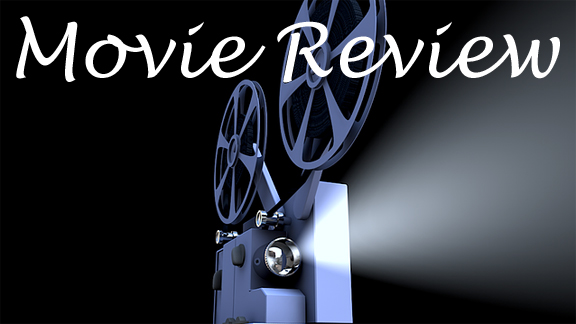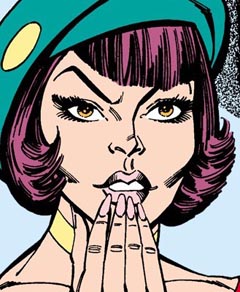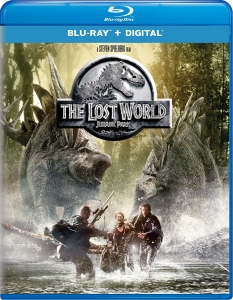Director Steven Spielberg and screenwriter David Koepp’s “The Lost World” (1997) abandons so much of the 1995 novel that it’s almost false advertising to say it’s “based on a novel by Michael Crichton.” Still, they retain the lost world idea, and that’s the film’s hook: Whereas “Jurassic Park” gave us hints of dinosaur behavior – such as the T-rex chasing the gallimimus flock – the sequel is all about seeing dinosaurs in their “natural” habitat; it’s a modern take on Arthur Conan Doyle’s concept.
(Obviously, there’s nothing truly natural about a small island of cloned dinosaurs, but I’ll set that aside for now.)
A grittier 2nd site
With dark and gritty cinematography by Janusz Kaminski, a more adventurous score by John Williams and some great set pieces (the scene of Sarah laying on slowly cracking glass in a trailer hanging over a cliff is particularly outstanding), the sequel sets a mood of wonders and scares even crazier than what you’d find in a glitch-filled zoo.

“The Lost World: Jurassic Park” (1997)
Director: Steven Spielberg
Writers: David Koepp (screenplay), Michael Crichton (novel)
Stars: Jeff Goldblum, Julianne Moore, Pete Postlethwaite
Like the novel, the movie goes to Site B (Isla Sorna), InGen’s factory island that has now gone back to nature. Arguably, the movie franchise could’ve stuck with Isla Nublar, as – unlike in Crichton’s book — it was not destroyed at the end of the first movie, and indeed, it had become a lost world in Topps’ “Return to Jurassic Park” comics.
However, I think it was the right decision to go to a new island, as it allows for a bigger roster of dinosaurs, notably a second adult T-rex and a baby, plus several new species, including pachycephalosaurs, parasaurs and stegosaurs. (We learn in a deleted scene on the DVD that the Isla Nublar facilities and dinosaurs actually have been destroyed by InGen. But because the scene – which also wrongly gives Ray Arnold the name John Arnold – was deleted, it’s not necessarily official canon.)
Several characters steal scenes
“The Lost World” also features a loaded cast, with several characters stealing scenes. The whole package doesn’t come together as tidily as “Jurassic Park,” but it’s hard to quibble with the individual performances or scenes – with the notable exception of the ridiculously over-the-top moment when Malcolm’s daughter Kelly dispatches a raptor with gymnastics skills.
Jeff Goldblum is, of course, the king of the scene stealers. But Malcolm doesn’t work as well as the main character of “The Lost World” as he did as a supporting character in “Jurassic Park.”
His quip-laden running commentary about the insanity of purposely spending time on a dinosaur-filled island is humorous (“Actually, it puts them at very convenient biting height.” “While you’re at it, why not smear yourselves with sheep’s blood?” “No, you’ll be back in five or six pieces!” And so forth.). But the ongoing argument feels repetitive; despite all his zingers here, I quote his handful of lines in “Jurassic Park” more often.

Pete Postlethwaite is deliciously entertaining as big-game hunter Roland, who looks to bag a rex. Richard Schiff, as field-tech expert Eddie Carr, and Julianne Moore, as one of those “future ex-Mrs. Malcolms,” likewise add legitimacy to the proceedings. Vanessa Lee Chester’s Kelly is one of those three kids Malcolm mentions in “Jurassic Park” (the other two aren’t referenced in this film), and she adds a family element to parallel the Grant-Lex-Tim bond of the original.
And Vince Vaughn, fresh off his breakthrough in 1996’s “Swingers,” has a natural charisma that’s particularly on display when the whole troupe ignores Ludlow but follows Nick’s orders.
Arliss Howard’s Ludlow – who takes over InGen from his uncle, John Hammond — is a despicable one-note villain, as he has all the recklessness of Hammond but nothing that makes him sympathetic. Initially, Ludlow isn’t completely stupid: He puts together a solid team, led by Roland, to round up several dinos to bring to Jurassic Park San Diego, which Hammond had started but then mothballed.
But OF COURSE Jurassic Park San Diego fails right out of the gate because the InGen employees OF COURSE don’t know the right dosages for tranquilizing and reviving a T-rex. For all Ludlow’s top-notch wranglers and state-of-the-art cages, when that T-rex starts stomping around San Diego and eating civilians, it’s safe to say his enterprise is an immediate public relations disaster.
Messy final act
The final act is somewhat of a mess, too, due to the unclear nature of the T-rex’s transport from Isla Sorna to San Diego. Many viewers felt the ship’s crew had to have been killed by stowaway raptors, due to the vicious scattering of body parts on the deck.
While there are rumors that the sequence was at some point supposed to include raptors, the official version is that the T-rex busted through its cage, killed or mortally wounded everyone, then went into the cargo hold. Then a boatman closed the cargo door on the rex as his dying act.
But the logic problems run deeper: After the T-rex gets loose, an InGen official tells Sarah that because the rex stopped breathing, they dosed it with naltrexone; because the dosage was too high, the rex broke free. The worker couldn’t have been on the boat, because everyone on the boat was killed.
So apparently the drug was administered just before the boat left the island, and the guy with the drugs didn’t travel with the rex, which is incredibly sloppy on the part of InGen. Additionally, it’s inexplicable that the boat crew didn’t contact their InGen higher-ups when the rex started breaking through its cage. There should’ve at least been time for a quick, horrified call.
Spielberg’s last stand
The T-rex-in-San-Diego sequence is a rewrite that came late in the game when Spielberg realized this would be his last “Jurassic” film and he wanted to take a crack at the T-rex stomping through a city in the tradition of “Godzilla.” Certainly, it’s better than Koepp’s original ending of pteranodons attacking the rescue helicopter, because 1) it’d be odd to introduce a new antagonist at the very end, and 2) that would leave the T-rex’s fate unsettled.
The seemingly innocuous final shot of “The Lost World” – back on the island, a pteranodon lands on a tree branch in broad daylight – inadvertently creates thematic confusion (or depth, if you’re being generous). In a TV news interview, Hammond waxes philosophical about how wonderful it is that the dinosaurs can live on the island, undisturbed by humans.
The film completely passes over the obvious danger of dinosaurs getting off the island – something that’s especially well represented by carnivorous dinosaurs THAT CAN FLY. (“Jurassic Park III” arguably makes that shot apocryphal when it shows pteranodons contained in an aviary.) By this point, Malcolm is dozing on his couch, obviously too burned out to rant at the on-screen Hammond.
Incomplete arcs
In the same vein, “The Lost World” gives a free pass to Nick, who – if you really think about it — is the Dennis Nedry of “The Lost World”: the guy whose actions trigger the chaos. Indeed, Nick flat-out disappears for the San Diego sequence.
While Nick means well by taking the bullets out of Roland’s gun, Roland’s inability to drop the T-rex costs the lives of at least two people in the camp (including a poor schmo who gets stepped on by the rex), and many more if you count those who subsequently run into the long grass and are picked off by raptors. There are sympathetic elements to naturalism, but when your actions get people killed, you’ve crossed a line.
The issues of dinosaur rights vs. human rights emerge through Nick and Hammond, but I suspect this is an accident since none of the characters discuss these issues in any depth.
While Crichton’s “Lost World” isn’t perfect either, the author at least attempts to say something fresh about chaos theory, dinosaur behavior and extinction. The “Lost World” movie, on the other hand, is thematically identical to “Jurassic Park”: It’s dangerous to create and try to control dinosaurs.
I don’t mean to be too harsh toward “The Lost World”; after all, this is a movie that I saw something like seven times in the summer of ’97. This isn’t one of those sequels that’s better than the original – “Jurassic Park” is a tighter, more emotionally satisfying film.
But by the same token, “The Lost World” looks great, sounds great, and has lots of new dinos and likable characters, so it’s a worthy sequel.

